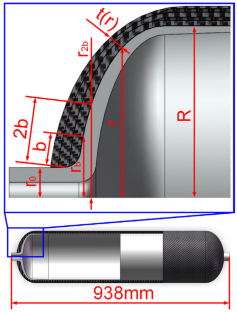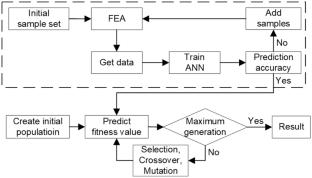An Efficient Optimization Method for Stacking Sequence of Composite Pressure Vessels Based on Artificial Neural Network and Genetic Algorithm
Abstract
This paper proposes an efficient optimization method for the stacking sequence of composite pressure vessels based on the joint application of finite element analysis (FEA), artificial neural network (ANN), and genetic algorithm (GA). The composite pressure vessel has many winding layers and varied angles, and the stacking sequence of the composite pressure vessel affects its performance. It is essential to carry out the optimal design of the stacking sequence. The experimental cost for optimal design of composite pressure vessels is high, and numerical simulation is time-consuming. ANN is used to predict the fiber direction stress of composite pressure vessels, which replaces FEA in the optimization process of GA effectively. In addition, the optimization efficiency of the optimization method proposed in this paper can be improved significantly when the neural network model is employed. The optimization results show that the peak stress in the fiber direction can be reduced by 37.3% with the design burst pressure. The burst pressure of the composite pressure vessel can be increased by 13.4% by optimizing the stacking sequence of composite pressure vessels while keeping the number of plies and the winding angle unchanged. The results imply that the work undertaken in this paper is of great significance for the improvement of the safety performance of composite pressure vessels.



 求助内容:
求助内容: 应助结果提醒方式:
应助结果提醒方式:


